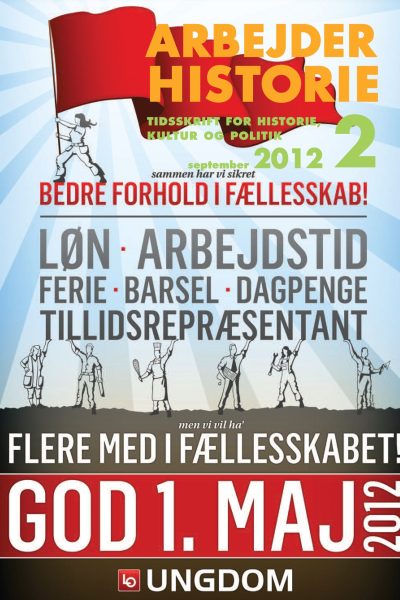Fortællinger om Pullmanstrejken, 1894
DOI:
https://doi.org/10.7146/arbejderhistorie.vi2.145014Resumé
Jan Friis: Tales about the Pullman Strike of 1894, Arbejderhistorie 2/2012, pp. 14-39.
Once upon a time, not far from Chicago, Illinois, there was a model industrial town. The town was called Pullman City after its creator
and owner George Pullman. In Pullman City, the Pullman Palace Car Company (PPCC) con-trolled the church, schools, library, local
market etc. Furthermore, PPCC’s propaganda machine endlessly published material about the city. Nearly all commentators were of the opinion that the relationship between capital and labor could be solved if everybody followed the example of Pullman. However, on the 11th of May 1894 the American Railway Union (ARU) went on strike against the PPCC. The rail traffic in America was ubsequently paralyzed.
“NOT A WHEEL TURNS IN THE WEST” writes Chicago Times on the 28th of June 1894, and predicts “the biggest tie-up in all history”. In the end the strike was broken by federal troops; people were shot and the union leaders were arrested and jailed. This world constantly changes and so do researchers’ theories and ideas. This insight leads to the desirability to create different accounts of history: The Pullman Strike can be understood as a revolt from spoiled and violent workers; a reaction to capitalistic oppression and exploitation; or a reaction – which transcends division of classes – to increased disciplination. In short, and with the help of metaphors, the article investigate the glasses through which a traditional historian perceive this world, followed by how a structural Marxist experiences it and in conclusion investigate the glasses through which a post-structuralist interprets it. To continue with metaphoric
language, each perspective should be understood as the design of different houses, the Pullman Strike works as the bricks and mortar
that holds each house together, I am the entrepreneur and you are the customer.
Downloads
Publiceret
Citation/Eksport
Nummer
Sektion
Licens
Copyright (c) 2012 SFAH og forfatterne

Dette værk er under følgende licens Creative Commons Navngivelse – Ikke-kommerciel – Ingen Bearbejdede Værker (by-nc-nd).


